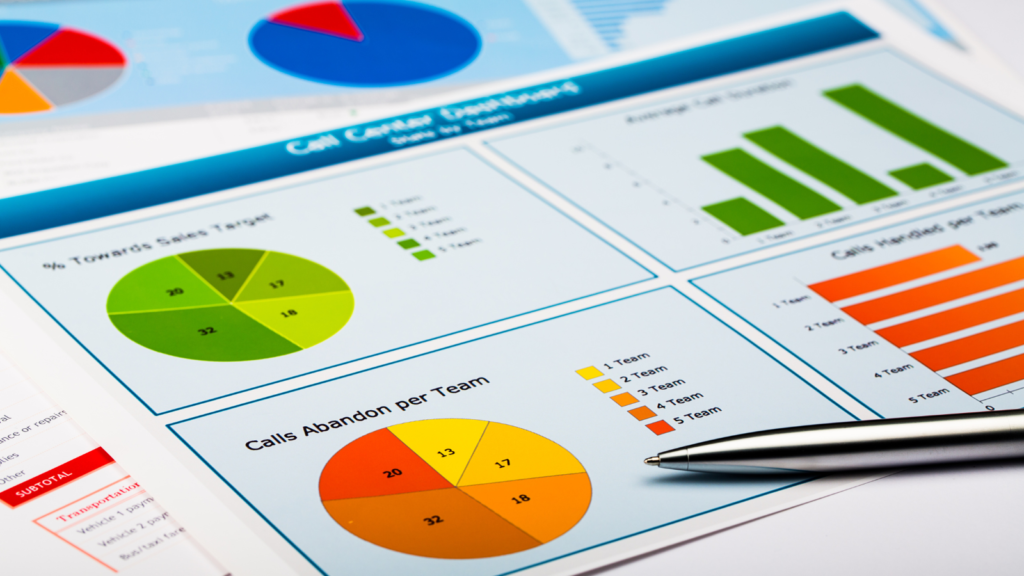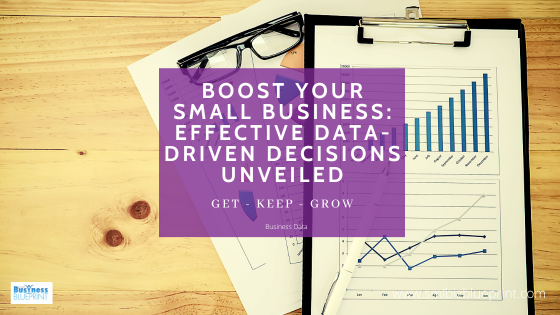In today’s digital era, the growth and success of small businesses hinge on understanding and utilising data analytics.
This comprehensive guide will share ten actionable ways data analytics can catapult your small business into heightened growth and competitive edge.
Let’s dive in and unlock the potential lying within your data.
#1 Decoding Customer Behavior for Tailored Offerings
Deep dive into your customer’s journey, from the first click to the final purchase. Utilise analytics tools to track which pages they visit most, how long they stay, and what they click on.
This data can reveal the most appealing products or features and areas needing improvement.
Implement tools like Hotjar for heatmaps and user session recordings. Conduct A/B testing based on the data to refine website design, product placement, and content strategy for increased engagement and sales.
Why It’s Crucial: Understanding customer behaviour is like having a roadmap to their preferences and needs.
How to Implement: Utilize tools like Google Analytics to track customer interactions on your website. Analyse purchase histories and feedback to tailor your offerings.
#2 Crafting Targeted Marketing that Resonates
Segment your customers based on demographics, purchasing habits, and online behaviour. Tailored marketing messages to these segments can significantly increase conversion rates.
Use email marketing platforms with analytics capabilities to segment your audience and tailor messages. Monitor open, click-through, and conversion rates to refine your approach continually.
Why It Matters: Effective marketing speaks directly to the customer’s needs and desires.
How to Implement: Use customer data to segment your audience and create personalised marketing campaigns.

#3 Elevating Customer Experience to Build Loyalty
Customer feedback, both positive and negative, is a goldmine. Analyse reviews and support interactions to identify common pain points and areas for improvement.
Implement a customer feedback system using tools like SurveyMonkey or Google Forms. Regularly review and analyse this feedback to make customer-driven improvements to your services or products.
Why It’s Essential: A satisfied customer is your best brand ambassador.
How to Implement: Analyze customer service interactions and feedback to enhance service quality.
#4 Pricing Strategies That Hit the Mark
Dynamic pricing strategies can be a game-changer. Analysing competitors’ pricing and market demand can help adjust your real-time prices to remain competitive and maximise profits.
Use tools to analyse competitors’ pricing. Experiment with different pricing strategies, such as time-based discounts or bundle offers, and track their impact on sales and customer acquisition.
Why It’s Vital: The right price can make or break a sale.
How to Implement: Leverage market data to optimise your pricing strategy, ensuring competitiveness and profitability.
#5 Streamlining Inventory for Efficiency
Overstocking or understocking can both be costly. Analysing sales data and seasonal trends can help predict inventory needs more accurately.
Implement inventory management software to integrate with your sales data to provide real-time inventory insights and automate reordering processes.
Why It’s Important: Excess inventory ties up capital; too little loses sales.
How to Implement: Use sales data trends to forecast demand and manage inventory effectively.
#6 Financial Health Monitoring for Smart Decisions
Regular financial analysis is crucial for identifying cost-saving opportunities and investment areas. Monitor cash flow, expenses, and revenue trends.
Use accounting software for real-time financial tracking. Set up monthly financial reviews to assess financial health and adjust strategies.
Why It’s Necessary: Financial health is the pulse of your business.
How to Implement: Regularly analyse your financial data to identify trends and make informed decisions.

#7 Navigating Market Trends for Strategic Moves
Staying updated with industry trends helps anticipate consumer behaviour and market conditions shifts, allowing for proactive strategy adjustments.
Subscribe to industry reports, follow relevant blogs, and use tools like Google Trends. Regularly schedule strategy sessions to discuss these trends and their implications for your business.
Why It’s Beneficial: Staying ahead of market trends keeps you relevant.
How to Implement: Use industry data to anticipate market shifts and adapt your strategies.
#8 Operational Efficiency for Cost Savings
Identifying inefficiencies in operations can lead to significant cost savings. Analyse processes like order fulfilment, customer service, and supply chain management.
Conduct process audits using tools like Process Street. Look for automation opportunities in repetitive tasks to save time and reduce errors.
Why It’s Critical: Streamlined operations reduce costs and improve customer satisfaction.
How to Implement: Analyze operational data to identify inefficiencies and implement improvements.
#9 Forecasting Demand with Predictive Analysis
Predictive analytics can anticipate future sales trends based on historical data, helping in inventory, staffing, and marketing planning.
Use predictive analytics tools like IBM SPSS to analyse past sales data. Develop models to forecast future demand and adjust your business strategies accordingly.
Why It’s Revolutionary: Anticipating customer needs ensures you’re always ahead.
How to Implement: Use historical sales data to predict future demand trends.
#10 Competitor Analysis for Strategic Edge
Understanding your competitors’ strategies, strengths, and weaknesses can help you find your niche and capitalise on market opportunities.
Use tools like SEMrush for competitor website analysis. Regularly review competitors’ social media, pricing, and product offerings to identify opportunities for differentiation.
Why It’s Key: Knowing your competition gives you the upper hand.
How to Implement: Analyze competitor data to identify gaps in the market and opportunities for differentiation.

Must Haves
Understanding and Acting on Customer Behavior:
Small businesses must understand their customers deeply. Businesses can tailor their offerings and marketing strategies more effectively by leveraging data analytics to track and interpret customer behaviours and preferences.
Optimised Pricing Strategy:
Implementing data-driven pricing strategies is a key factor for growth. Small businesses can use data analytics to understand market demand, competitor pricing, and customer price sensitivity, helping them set competitive yet profitable prices.
Operational Efficiency and Cost Management:
Enhancing operational efficiency through data analytics is essential. This involves using data to streamline processes, manage inventory more effectively, and make smarter financial decisions, leading to cost savings and improved customer satisfaction.
Additional Options
Competitor Sentiment Analysis:
Beyond traditional competitor analysis, employing sentiment analysis on social media and review platforms can provide deeper insights. This can reveal what competitors are doing and how their customers feel about it, offering an opportunity to capitalise on their weaknesses or replicate their strengths.
Micro-Moment Marketing:
Small businesses can use data analytics to identify and leverage ‘micro-moments’ when consumers turn to a device for an immediate need. Businesses can create targeted content that addresses these immediate needs by analysing search queries, social media trends, and online behaviour, positioning themselves as timely problem-solvers.
Predictive Customer Lifecycle Management:
Instead of just analysing past customer behaviour, use predictive analytics to forecast future customer actions and lifecycle stages. This approach can help proactively address customer needs, anticipate churn, and identify upsell or cross-sell opportunities before they are obvious.
FAQs
Q1: What is the first step in implementing data analytics in my business?
A1: Identify the key areas you want to improve and choose the right tools to cater to those needs.
Q2: How can I ensure data privacy while using analytics?
A2: Invest in secure data storage solutions and stay updated on data protection regulations.
Q3: Can small businesses afford data analytics?
A3: Yes, several cost-effective and even free tools are available for small businesses.
Q4: How often should I analyse my business data?
A5: Regular analysis (at least monthly) is recommended to stay informed and responsive to trends.
Q6: What if I don’t have a background in data analysis?
A6: Consider online courses or hiring a part-time analyst to get started.
In summary, leveraging data analytics is not just a strategy; it’s necessary for growth in the modern business landscape.
Your small business can gain a competitive advantage by implementing these ten strategies.
Remember, understanding and using your data to make informed, strategic decisions is key to success.

